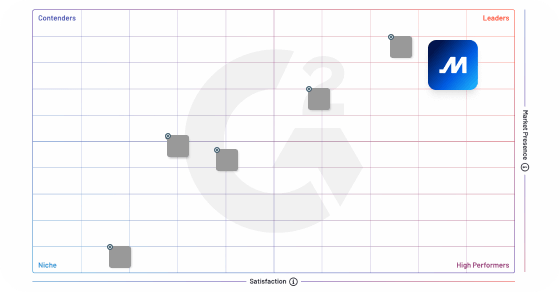From the supply chain crisis to the COVID-19 pandemic, 2021 left a lot of unfinished business. Thankfully, it’s a new year with a fresh outlook, and anything can happen. What will happen? Here are Motive’s top predictions for 2022.
The federal vaccine mandate will go into effect right as the new variant takes hold
The U.S. Supreme Court will let the federal vaccine mandate stand. Workers at large and mid-sized employers will get vaccinated by the January 10 deadline or participate in weekly COVID-19 testing. They’ll do it right as the omicron variant becomes the dominant U.S. strain.
As omicron prepares “to sweep across the country with massive increases in cases,” former CDC Director Dr. Tom Frieden warns that “it’s shaping up to be a hard winter.”
The Biden Administration will do more to address supply chain backups
The supply chain was a major focus in 2021, and it will continue to be in 2022. Forecasters predict that increased demand and reduced capacity won’t start to come into balance until this summer at the earliest.
A Federal Reserve report expresses concern that supply chain issues will slow economic growth this year.
To keep freight moving, officials could seek tariff relief on important building materials or waive hours of service rules for commercial drivers. The government will have to invest more heavily in the digital infrastructure of the future, and while that’s a long-term solution, more quick fixes will be needed.
In a tight labor market, artificial intelligence will be key to retaining employees
One year ago, HR professionals said “the biggest trend shaping recruitment in 2021” would be the use of artificial intelligence to source and assess employees. They were right, and 2022 will take it one step further.
This year, as labor shortages in construction and trucking continue, AI will be as pivotal to retaining employees as to recruiting them. AI-driven risk scoring, crash prediction, and behavioral coaching recommendations will be in demand.
And as companies use AI-based technologies to reward, develop, and retain employees, they’ll see that the best “new hires” are the workers they already have.
Entry-level driver training requirements will go into effect, and new drivers will be undeterred
When new entry-level driver training requirements go into effect on February 7, they will create a uniform, consistent standard of training for CDL permit holders.
Some might fear that more thorough driver training at the outset could scare away candidates and worsen the driver shortage, but we predict that new drivers will welcome the chance to be better prepared for a career on the road, and that U.S. roads will be safer for it.
The passage of the bipartisan infrastructure bill will give the transportation industry reason to celebrate
For the workers and industries impacted by the $1.2 trillion infrastructure bill, 2022 is looking up.
The legislation calls for $550 billion in federal infrastructure investments over five years. More than half of that money is designated for transportation projects, including $110 billion for road and bridge work.
For the construction industry, these investments mean stable work and a lot of it. There will be $66 billion directed to passenger and freight rail; $39 billion intended to improve public transit; and $264 billion directed toward “other” types of infrastructure work.
What does that look like? Oh, just improving the electrical grid, expanding broadband access, and conducting environmental remediation, to name a few.
But don’t expect economic growth to happen overnight. As U.S. Bank senior investment strategy director Rob Haworth notes, “This legislation is not aimed so much at driving baseline growth today but helping drive potential growth for years to come.”
Summer will bring an influx of young, tech-savvy talent, and the labor shortage will begin to get a reprieve
What can we say? The passage of the infrastructure package has us feeling optimistic.
Sure, construction is still down 115,000 jobs from its February 2020 peak, but the residential building sector is showing signs of growth, and many of the jobs created from the infrastructure bill won’t require a college degree.
That means the construction industry will have immediate access to tech-minded teens who are ready to roll up their sleeves and get to work. A fresh pool of digitally-focused Gen Z grads will help too.
Alternative-powered vehicles, especially electric vehicles, will be a focus
The volume on green energy and alternative fuels has grown louder in recent years as fleets have proactively worked to reduce their carbon footprint. From electric vehicles to natural gas and hydrogen-based fuel cells, more sustainable transportation technologies are coming.
In “An Overview of Alternative Fuels for Commercial Transportation,” writer Brett Wetzel looks at what the near future holds.
Battery-powered electric vehicles “haven’t yet gained mainstream traction in heavy-duty applications,” Wetzel writes, but “major pre-orders are signaling the beginning of a shift in the shipping industry.”
Volvo, Peterbilt, Kenworth, and Tesla released electric trucks in 2020, and Daimler and Nikola released their own in 2021. With President Biden’s focus on reducing emissions and slowing climate change, alt-powered vehicles will continue to set the pace in 2022.
New construction projects will inspire a flurry of M&A activity
Public building projects will surge in 2022, and mergers and acquisitions will rise with them.
As construction firms look to capitalize on a fresh avalanche of projects, “to be successful, it’s going to help to be bigger.” That’s what Anirban Basu, chief economist for Associated Builders and Contractors, told the Engineering News-Record in December.
Basu also says that as technologies become pricier and recruiting and training costs remain high, it will help “to have a larger line of credit and more bonding capacity to go after some of these large-scale projects that are coming down the pipe, whether in infrastructure or other segments.”
For a recap of the biggest events from last year, check out our 2021 year in review.









